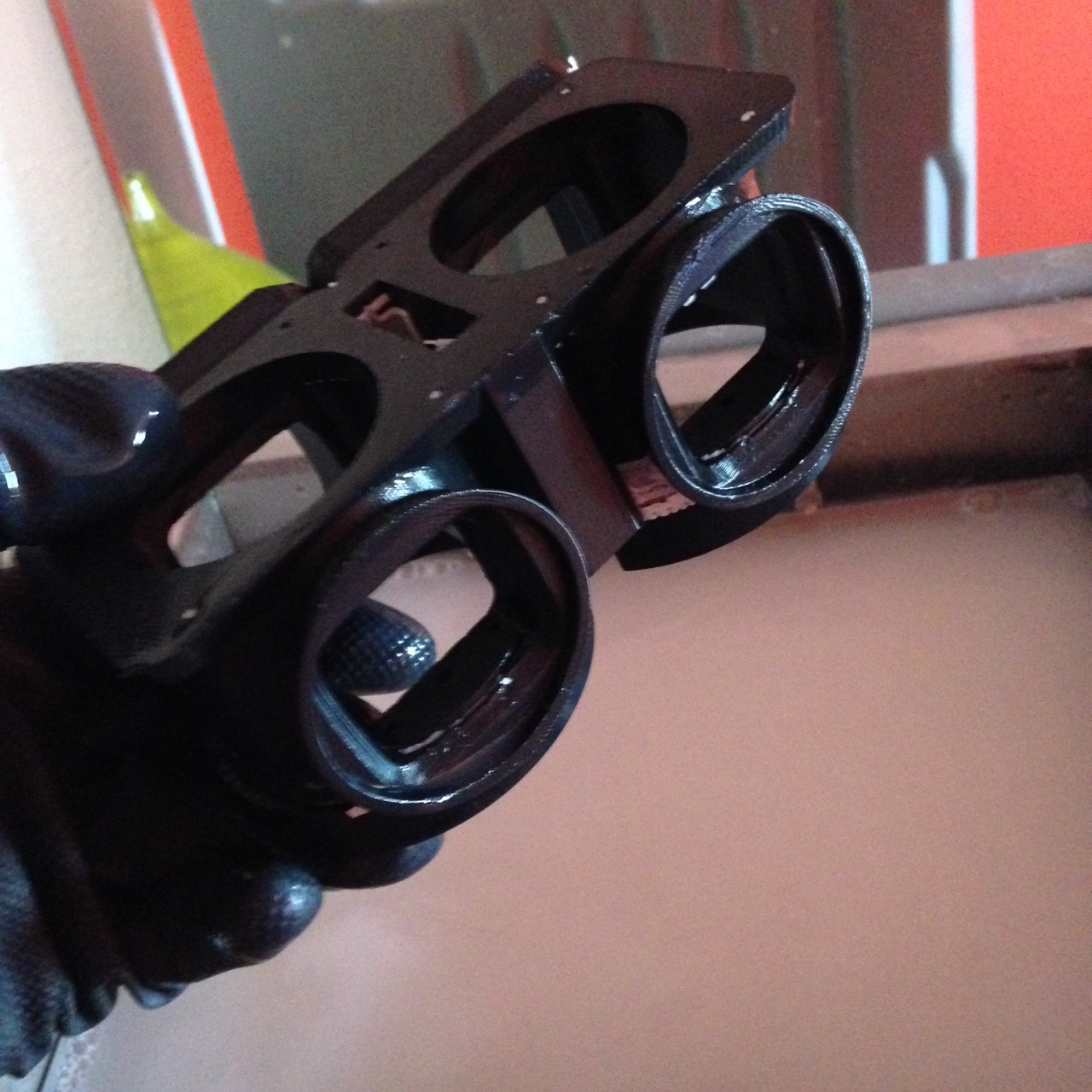After defining the terms of what a Perceptoscope should be, and the broad strokes for how it would work, I went into a discovery phase of optical experimentation. I bought and took apart basically anything I could get my hands on with optics, and stayed up late into the night examining how combinations of lenses could modify a view of a flat image or the world itself.
Some of my earliest prototypes were sacrificed and torn apart in the chaos of experimentation. They were large and cumbersome, and I strained my eyes trying to make the stereo image converge in the space in front of me.
I eventually figured out the right combination of lenses to bring into focus both the outside world as well as the near eye screen, and waited patiently for the military surplus prisms I ordered to arrive.
Once I had everything in one place, I built a cardboard prototype of my entire optical system out of a Dremel box, and started to work with a script in Processing designed to mimic a stereoscopic display.

I started build a larger box for the optics out of a shoebox to hold this cardboard prototype so I could start playing with throwing objects further into the space.

Now that I was satisfied with the layout, I designed a housing for all the optics in Rhino, and sent it off to be 3D printed.

There's still a lot of experimenting and math to be done to really perfect the system, but it also has some unique optical qualities that I never could have anticipated. For one, the way in which the outside world is brought into view actually gives users a wider angle than their typical sight. This effectively exaggerates the amount of depth between objects, and makes the outside world feel more three-dimensional. Even without the augmented reality compositing, Perceptoscope's optics were something which felt distinctly different from the everyday.
As we push the optics of the system further, it'll be fun to discover what other qualities emerge, and how much more impressive the system can be when we experiment with the ability to zoom in and out, or dynamically adjust to outside lighting conditions.
Discussions
Become a Hackaday.io Member
Create an account to leave a comment. Already have an account? Log In.